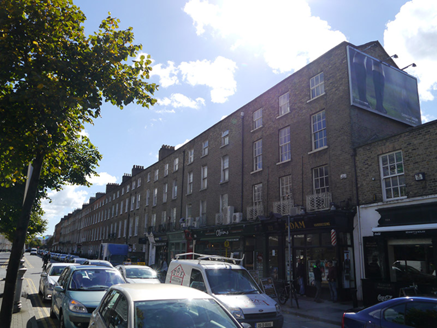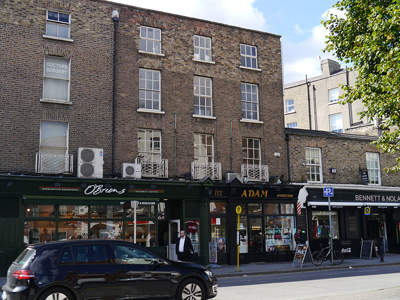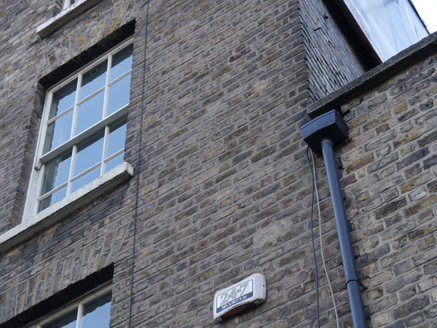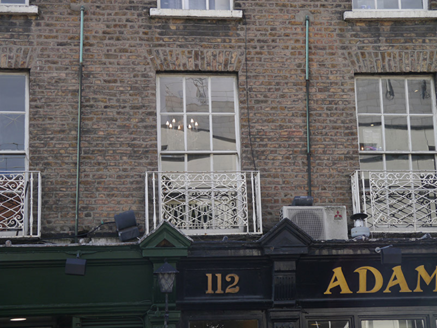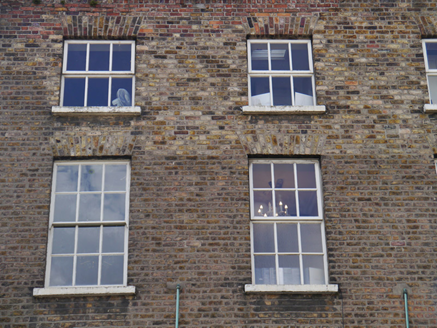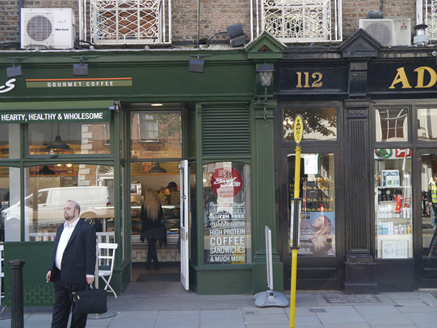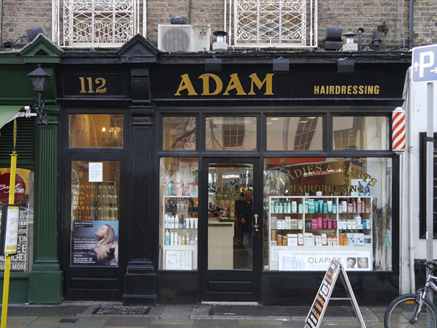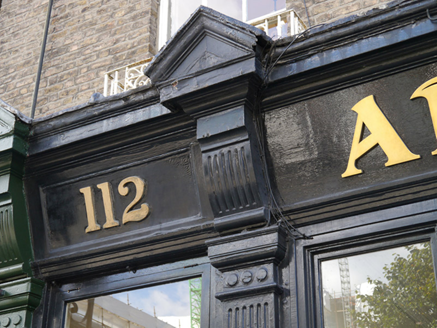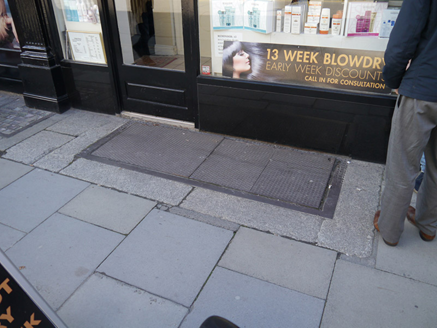Survey Data
Reg No
50930160
Rating
Regional
Categories of Special Interest
Architectural, Artistic
Original Use
House
In Use As
Shop/retail outlet
Date
1800 - 1820
Coordinates
316712, 233194
Date Recorded
15/09/2015
Date Updated
--/--/--
Description
End-of-terrace three-bay four-storey former townhouse over concealed basement, built c. 1810, now in commercial use with offices above. Pitched roof concealed behind brick parapet topped with brick soldier course and granite coping, two chimneystacks to rear (south) elevation, one central and one to east party wall. Concealed gutters with replacement uPVC downpipe breaking through to east. Buff brick walls, Flemish bond to principal (north) elevation, English garden wall bond to western gable. Square-headed window openings with projecting sills and brick voussoirs, diminishing to upper floors, largely six-over-six replacement timber sliding sash windows with horns, three-over-three top-hung modern timber casements to third floor and central bay of second floor. Decorative cast-iron balconettes to first floor openings. Central door opening to ground floor, with retail units to outer bays; that to east extends into neighbouring building, No. 111 (50930161). Square-headed ground floor openings with multiple recent plain glass display windows over replacement masonry stall risers. Recent timber-glazed door to centre with plain glass overlight, flanked by fluted masonry pilasters on plinth stops with pearl moulding rising to fluted console brackets topped with pediments. Timber frieze, panelled with raised lettering to centre ‘112’, recent signage to shopfronts, all having moulded timber cornice. Steel cover over basement of western-bay. Street-fronted on south-side of Baggot Street Lower.
Appraisal
This building has been successively altered, resulting in some loss of historic fabric and detailing, particularly on the ground floor. However, the materials, massing and proportions contribute to the strong architectural continuity which remains on the south-side of Baggot Street Lower. Forming part of a largely cohesive terrace, the streetscape is characterised by similar terraced groups, however the subtle discrepancies between each is indicative of the speculative nature of development within the street. Baggot Street, as it became known in 1773, is an ancient route from the city which was named after the manor granted to Robert Bagod in the thirteenth-century, called Baggotrath. Developed on Fitzwilliam’s land during the late-eighteenth century, construction of the street progressed slowly due to the economic recession of the 1790s; the area to the west of Fitzwilliam Street was built by the late 1790s but development to the east was more gradual with gaps remaining until the mid-nineteenth century.
